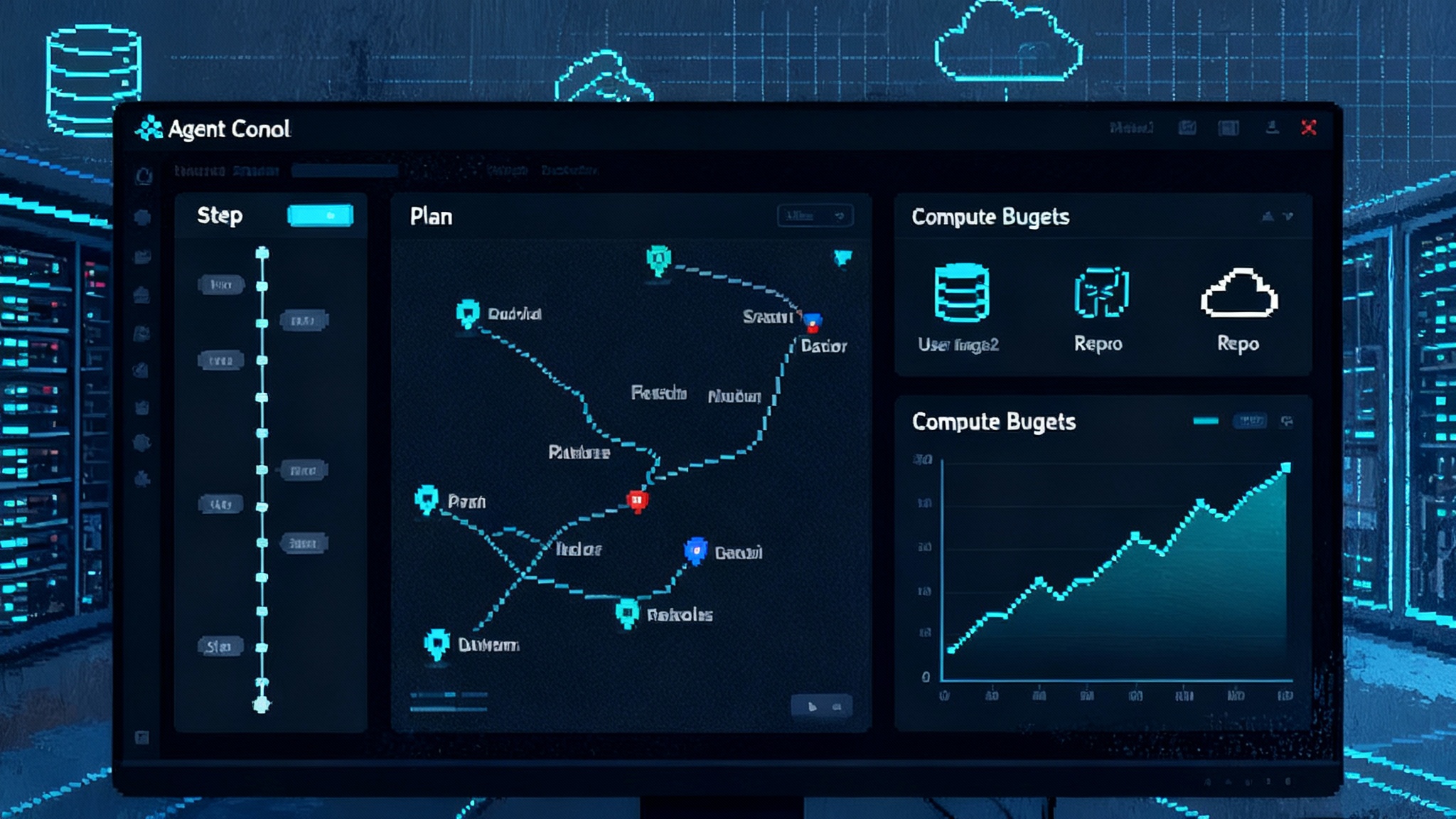Manus 1.5 signals the shift to production agents
Manus 1.5 claims unlimited context and a rebuilt agent engine. We break down what that really means, how dynamic compute and stable planning work, and what it demands from memory, evals, and connectors.

The week demos became deployments
Manus 1.5 arrives with a headline promise of unlimited context and a re-architected agent engine. The official Introducing Manus 1.5 announcement frames the release as faster, higher quality, and capable of turning a conversation into a working application. Claims will be debated, but the direction is notable. The conversation around agents is moving from clever demos to production goals.
The real story is not the version number. It is the set of ideas that Manus is packaging for builders. If you work on agents, three phrases should sit at the top of your notes after this launch:
- Context streaming over long tasks
- Dynamic compute allocation
- Stable multi-step planning
Below, we unpack each idea in clear language, then map the consequences for the less glamorous pieces that decide whether agents survive real work: memory and databases, evals, and connectors. We close with a field guide for teams shipping now and the outcomes worth watching as the wave rolls through.
What unlimited context really means
Unlimited does not mean infinite. It means the system keeps the right facts handy as long tasks unfold and avoids the slow drift that pushes early decisions out of scope. Manus has published an approachable take on why raw token limits do not solve this and why orchestration matters in its wide research explainer.
A useful metaphor is a road trip with a small glove compartment. You cannot fit the whole atlas in front of you, so you keep the current map, a note about where you came from, and a tab for the next exit. As miles pass, you swap map segments, but you do not lose the last directions or the destination. Context streaming is the runtime version of that routine:
- The agent maintains a rolling window of current instructions and artifacts.
- It pins critical decisions so later text cannot evict them.
- It writes durable breadcrumbs to external memory so it can reload state after tool failures or model swaps.
With this approach, a multi hour session can survive retries, timeouts, or restarts without asking the user to repeat themselves. The visible effect is coherence. The cost is infrastructure that can log and reload state cheaply and correctly.
If your org is already thinking about memory as a product surface, compare this approach to the trends we tracked in the memory layer arrives with Mem0. The details differ, but the direction is the same: short term working state must be tightly modeled, and long term recall must be auditable.
Dynamic compute allocation in practice
Most agent runtimes still treat every step the same, like a car stuck in one gear. Dynamic compute allocation is the transmission. When the task gets steep, the runtime downshifts to think longer, retrieve more, or fan out across tools. When the road flattens, it upshifts to save time and credits.
Concretely, a runtime can vary along three axes:
- Depth of reasoning: how much thinking time to invest before acting.
- Breadth of tool use: how many tools or data sources to consult in parallel.
- Fidelity of verification: how many checks to run before committing an irreversible change.
Imagine an agent building a small commerce site. Creating a product schema is routine, so the system runs fast and cheap. Touching payment settings or editing DNS is risky, so the system slows down, runs a dry run, seeks confirmation, and logs a signed change. The user experiences one assistant that knows when to sweat the details. Under the hood, the runtime is spending compute where risk and value are highest.
This idea fits the broader shift from prompts to durable software objects, which we tracked in from prompts to production at Caffeine. Orchestration and budgeting are pulling ahead of clever prompt tricks because they scale across use cases.
Stable multi-step planning without thrash
Early agents often oscillated. They would propose a plan, change direction, and re-edit the same files in circles. Stable planning is about producing a plan that can absorb feedback, tool errors, and new facts without forgetting what already worked.
Practical ingredients for stability:
- Waypoints: name milestones and store them as first class records, not just text in a chat. Waypoints give the agent something to defend against accidental backtracking.
- Idempotent actions: design tool calls to converge on the same state when retried. If a step is repeated, it should not double side effects.
- Plan deltas over rewrites: when the plan changes, record a diff with a reason. Evaluators get a structured trace, and the agent has the context to reconcile rather than start over.
These pieces turn a plan into a living thing with continuity. Users feel progress instead of wheel spin. Builders who live inside IDEs will recognize how this pairs with the trends we covered in Cursor 2.0 multi agent coding. When plans and actions become typed objects, they are easier to recover and easier to audit.
Why the data layer matters: agent databases
Unlimited context is only convincing if the agent can reload its mind. That puts fresh pressure on the database tier beneath the agent. A production agent database needs to support fast working memory, long term forensics, and verifiable recall.
What a production agent database should provide:
- Event sourced memory: treat every agent step as an append to a timeline. Each event should capture inputs, tool calls, outputs, and a hash of any artifacts written to disk or object storage.
- Typed short term state: store the current plan, active waypoints, and pinned constraints as structured records. This keeps hot context compact and reliable to reload.
- Blended retrieval: combine vector search for unstructured notes with relational queries for state and file lineage. The agent should be able to fetch the latest decision about pricing and the files linked to that decision in one query.
- Time travel and forensics: enable snapshot reads at any prior step so you can answer what changed, when, and why. This is table stakes for audits and debugging.
Verifiable memory is the next rung. You do not need heavy cryptography to get real value. A simple hash chain across the event log plus content addressed storage for artifacts provides tamper evidence. Even better, compute a lightweight proof when the agent loads pinned context, then record that proof with the subsequent action. Your audit trail becomes a causal chain, not just a chat transcript.
A minimal reference architecture
If you are starting from scratch, a pragmatic first cut looks like this:
- A relational store for structured state that captures plans, waypoints, permissions, and idempotency keys.
- An append only event log table keyed by session and step with checksums of inputs, tool calls, outputs, and artifact URIs.
- Object storage for artifacts with content addressed paths and size limits per action class.
- A vector index for unstructured notes and summaries, joined by identifiers that map back to the event log.
- A lightweight verifier that rebuilds a step from checksums and flags drift before it reaches the user.
This stack is boring on purpose. Agents will only earn trust if the data path is easy to reason about and cheap to recover.
Evals that match long running work
If you keep testing agents with single prompt quizzes, you will keep shipping fragile systems. Long tasks create different failure modes, and they demand different evaluations.
Design a three layer eval program:
- Unit agents: measure tool adapters and narrow skills in isolation. For example, given a document and a spec, can an adapter reliably pull block identifiers and how often does it time out.
- Mission tests: evaluate multi hour tasks with waypoints and failure injection. For example, build a simple invoicing app, revoke a token midway, throw a 502 from hosting, and check whether the agent recovers, asks for help, or corrupts state.
- Live guardrails: instrument production with canary tasks and post hoc scoring. For example, run an hourly audit that re-checks the last plan against the current repo and deployed environment, then flag drift before users report it.
Metrics to add beyond accuracy and latency:
- Plan stability index: percentage of steps that reuse the existing plan versus full rewrites.
- Recovery rate: fraction of injected failures that the system resolves without human help.
- Verified action ratio: percentage of irreversible actions preceded by a successful check.
- Context hits: proportion of pinned facts that appear in the agent explanation when they are relevant.
These numbers tell you how the system behaves under pressure, not just how it answers a quiz.
Connectors you will not have to apologize for
Connectors are the plumbing that makes an agent useful. They are also the most common source of silent failure. A production stack should put three layers around every connector:
- Adapter: thin code that maps the provider API into a typed interface with strict input validation and consistent error shapes.
- Broker: a queue and retry policy that isolates the agent from upstream hiccups. Include idempotency keys and backoff with jitter. Track saturation so the runtime can choose alternative plans when a service degrades.
- Runner: a sandboxed environment with clear budgets for time, network, and disk. The runtime should be able to select heavier runners for large jobs and pin outputs to storage that the agent database understands.
Pair those layers with intent aware policies. Touching code repos, cloud accounts, or payment rails should trigger elevated verification. Reading a public page should not. Safety feels less like friction when it is proportional to risk.
What this wave means for builders
It is tempting to answer a headline like Manus 1.5 by cranking out dozens of small apps. Resist the urge. Winning in this cycle is less about interface variety and more about trustworthy runtimes. Here is a pragmatic counter strategy that compounds across use cases.
- Verifiable memory by default: adopt an append only event log, content addressed artifact storage, and a hash chain across both. Build a viewer that lets customers browse steps, artifacts, and plan diffs. Trust jumps when people can see what happened and in what order.
- Auditability without friction: expose a one click export that captures the timeline, the tools invoked, the policies applied, and the signed changes made. Offer role based redaction for sensitive data so compliance reviews do not turn into fire drills.
- Safety by design: define classes of irreversible actions and require staged confirmation. First a typed dry run, then an out of band confirmation for high risk operations, then a durable commit with a receipt in the event log. Keep the fast path open for low risk tasks.
- Cost clarity: show where dynamic compute kicked in and why. Summarize thinking time, retries, and verification in the transcript, and translate it into dollars and minutes. When people understand the bill, they are more likely to upgrade than churn.
If you are building across multiple domains, this approach will feel familiar to readers of the memory layer arrives with Mem0 and from prompts to production at Caffeine. Improvements to the runtime travel across use cases and are harder to copy than interface flourishes.
A short field guide for teams shipping now
- Start with one demanding workflow that touches code, data, and a live service. Use real credentials inside a sandbox and require the agent to deploy something a user can click.
- Layer dynamic compute policies before you swap base models. You will save more by eliminating wasted retries than by chasing a marginal model upgrade.
- Add plan waypoints and idempotency to your top three tools. Oscillations will drop without touching the model.
- Build a memory viewer before you build a template gallery. It becomes your debugger, your sales demo, and your compliance artifact in one place.
- Treat connectors like production services. Give them dashboards, budgets, and on call. Your agent reputation is only as strong as the weakest adapter.
- Enforce receipts for high risk actions. Every destructive step should link to the inputs, the preflight checks, and the confirmation path taken.
What to watch as Manus 1.5 rolls out
Manus frames unlimited context as a capability that unlocks full stack building within a single conversational flow. The company highlights faster completion, higher quality, and a new tier for cost sensitive work. Those claims should be tested by independent evaluation programs, not by anecdotes. What matters for builders is the new bar. The benchmark is no longer a clever tool chain demo. It is sustained, auditable progress across tasks that span hours and systems.
Even if you do not adopt Manus, you can align your roadmap to the principles that this release has pushed into the spotlight:
- Stream context instead of hoarding it.
- Spend compute where risk and value are highest.
- Make plans stable, visible, and recoverable.
Teams that lean into these ideas will see fewer restarts, cleaner handoffs, and receipts that build trust with customers and reviewers.
The takeaway
Manus 1.5 is a milestone because it puts clear names on the qualities that make agents usable at work. Unlimited context is disciplined memory management. A new engine is a scheduler that moves compute to the right steps. Better planning is a trail of waypoints and proofs. Ship those qualities and you will not need to shout. Your system will demonstrate itself, one verified step at a time.








